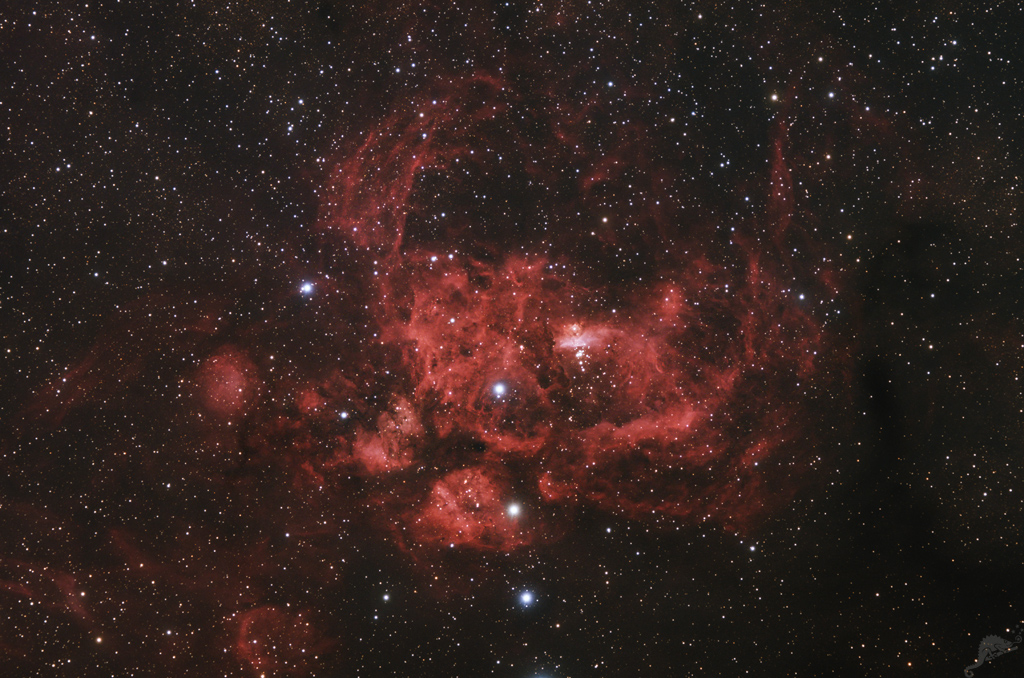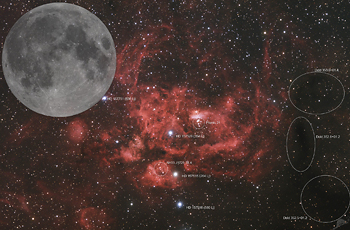 |
CHAMÄLEON + ONJALA OBSERVATORY DeepSky | SITEMAP HOME CHAMÄLEON |
|
 |
|||
| « back to overview Nebula | Load higher resolution (1800 x 1200 Pixel 3500 x 2300 Pixel) | Object description |

NGC 6357 - popularly called the Lobster Nebula - is a large star-forming region in the constellation Scorpio. Within this H-II region, pervaded by dark dust clouds, are some very young open star clusters - among them Pismis 24 - whose many massive blue stars excite the hydrogen gas of NGC 6357 to glow with their extremely strong UV radiation.
Between our solar system and the H-II region, towards the center of the Milky Way, lie dense cold dust clouds. This dust "reddens" the light and absorbs blue nebular components and so NGC 6357 shows up nearly uniformly in red color.
The nebular region lies at a distance of about 8000 light years from our solar system and from this follows a true diameter of about 100 light years for the brighter part and 200 light years for the outer part of the nebula. NGC 6357 was discovered by John Herschel on June 8, 1837 during his 5-year stay in Cape Town, South Africa.
Pismis 24 is one of the youngest open star clusters in the Milky Way. The age of the stars is estimated to be only 1 to 2 million years. The brightest star in the cluster - Pismis 24-1 - was long considered THE most massive star in our galaxy with a total mass of 200- to 300 solar masses. According to common theories of star formation and evolution such massive stars should not exist. And so observations in 2006 with the Hubble Space Telescope also showed that Pismis 24-1 is a double star, possibly even a triple star system. A double star would have masses of 70 to 100 solar masses and this would be in agreement with the theories of star formation. At least one other star in Pismis 24 also reaches 70 to 100 solar masses.
Stars of this size have a short life, Pismis 24-1 and Pismis - 24-17 will be torn apart in a few million years in a violent supernova explosion.
 |
Paris Maria Pismis was an Armenian astronomer who
discovered the star cluster in 1959 and dedicated herself to the observation of
young open star clusters. More information about the Hubble observations can be found here and a Hubble image here A table with spectral type and solar masses of the stars of Pismis 24 can be found here We also have a narrow band image of NGC 6357, which we show here. « Click here or the thumbnail to load a large annoted image and a size comparison to the full moon. |
 |
 |
 |
 |
 |
 |
 |
| Sun | Moon | Solar System | DeepSky | Widefield | Miscellaneous | Spec. Projects |